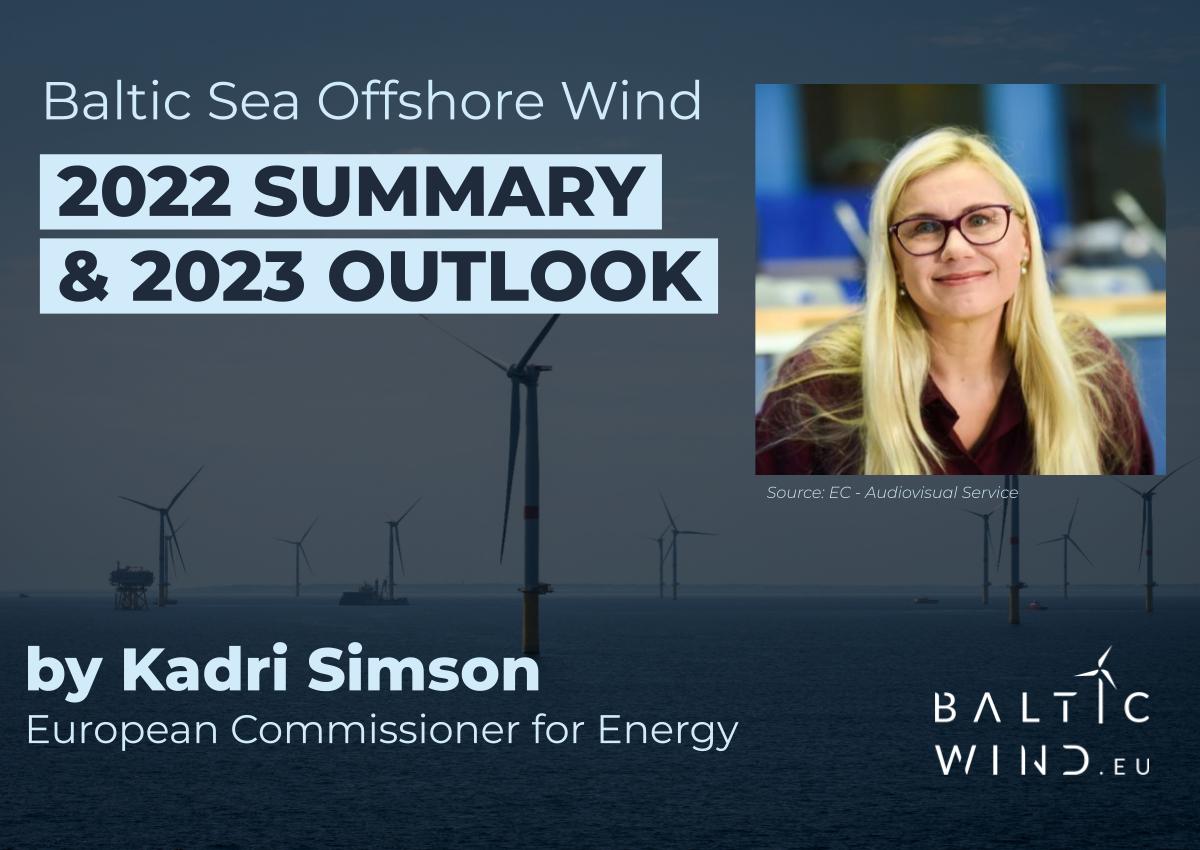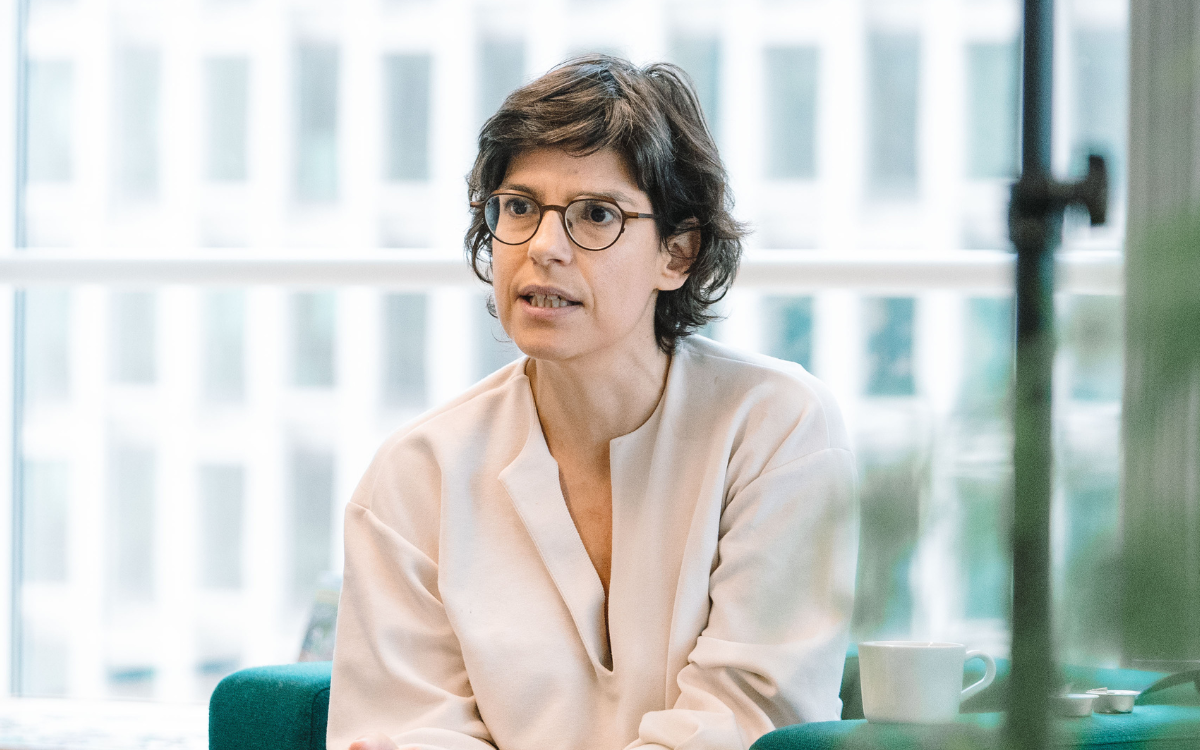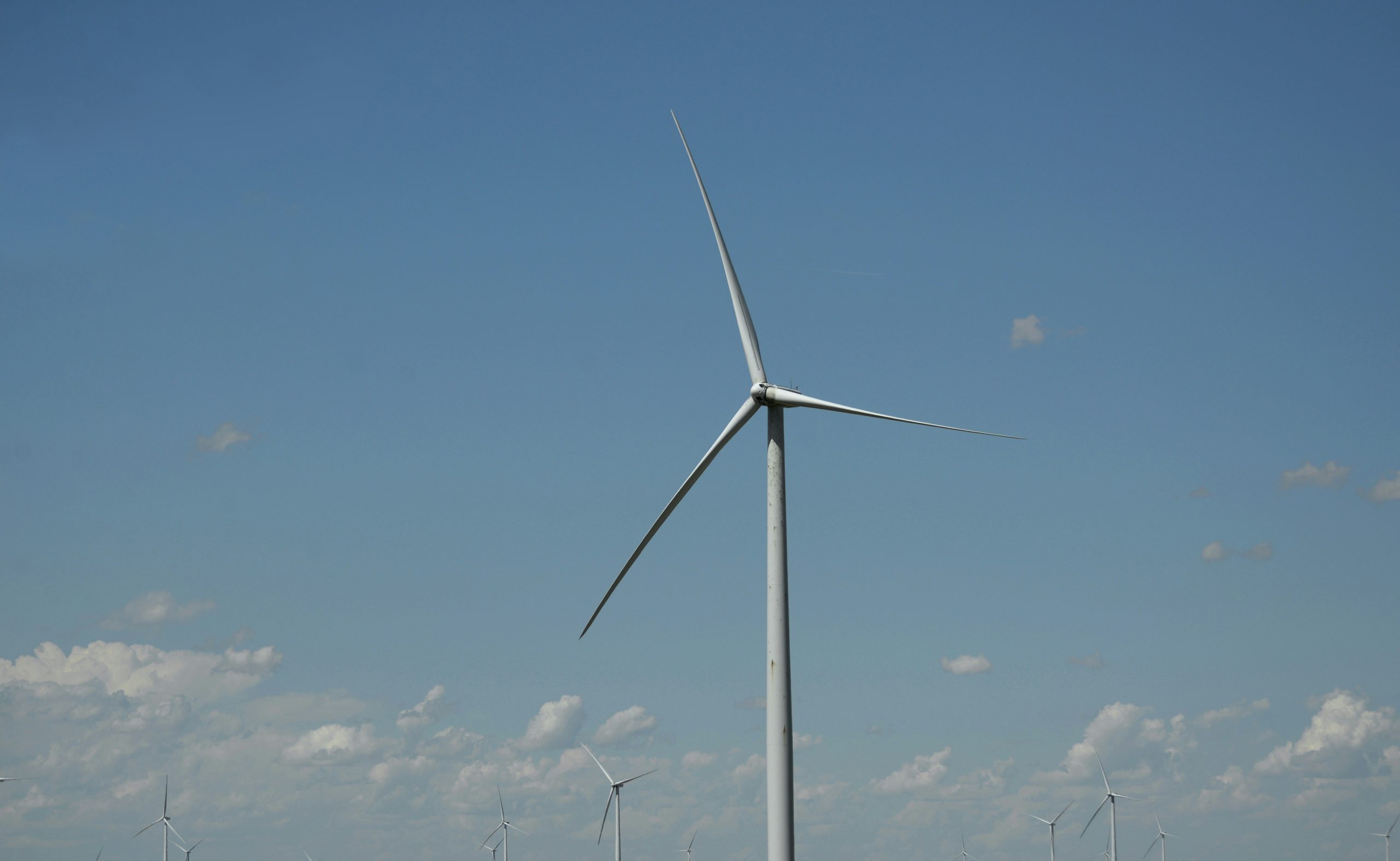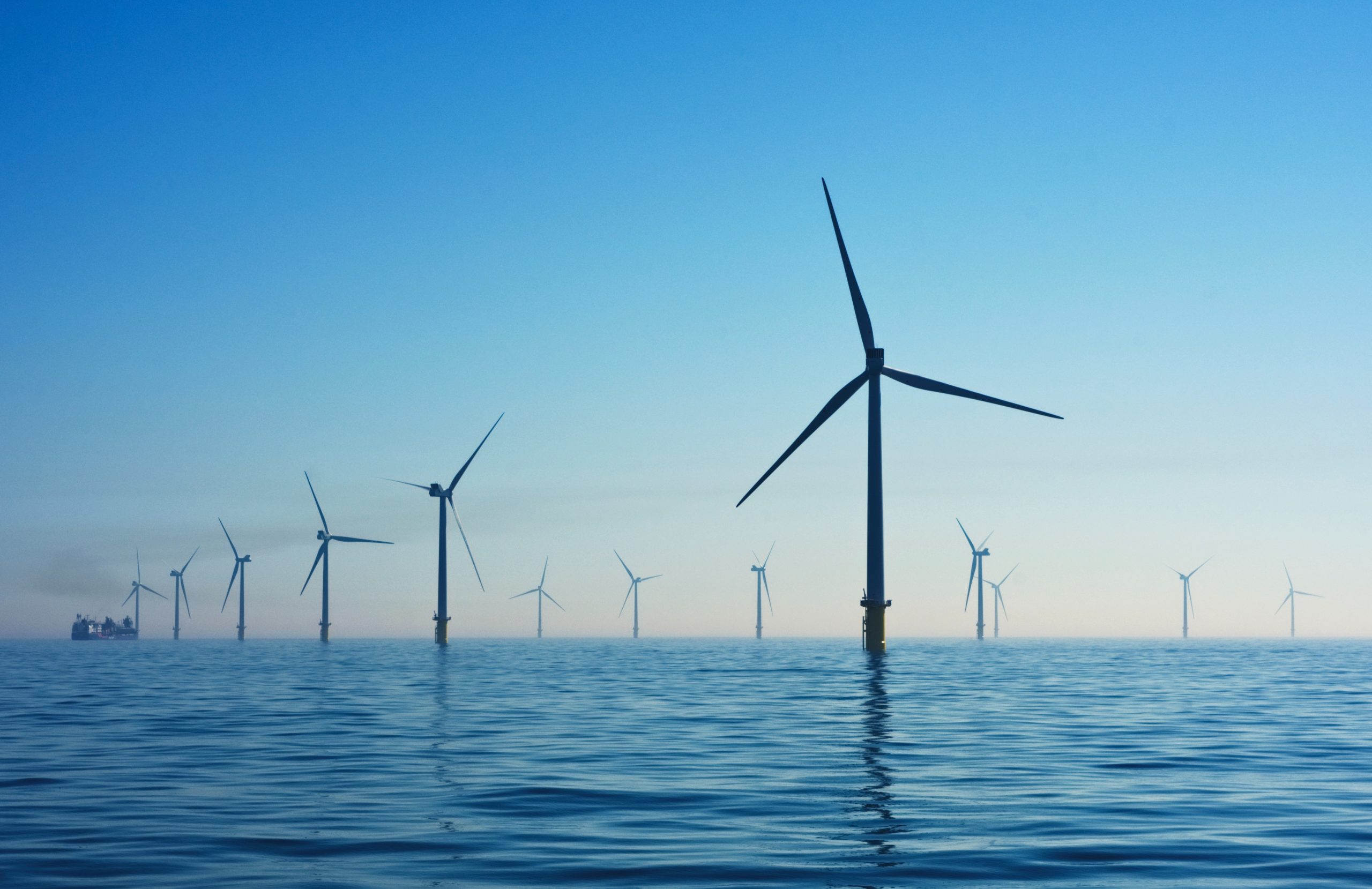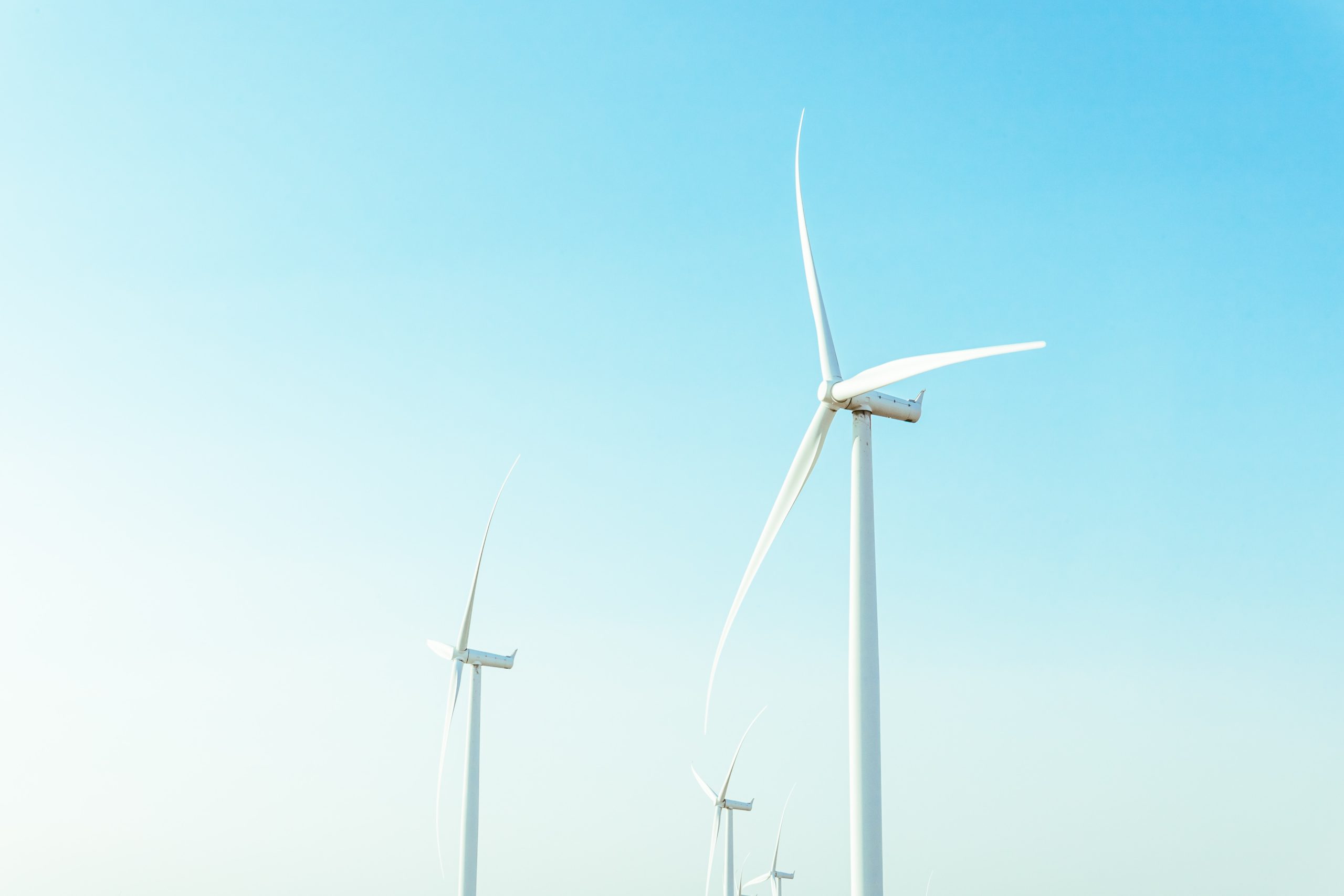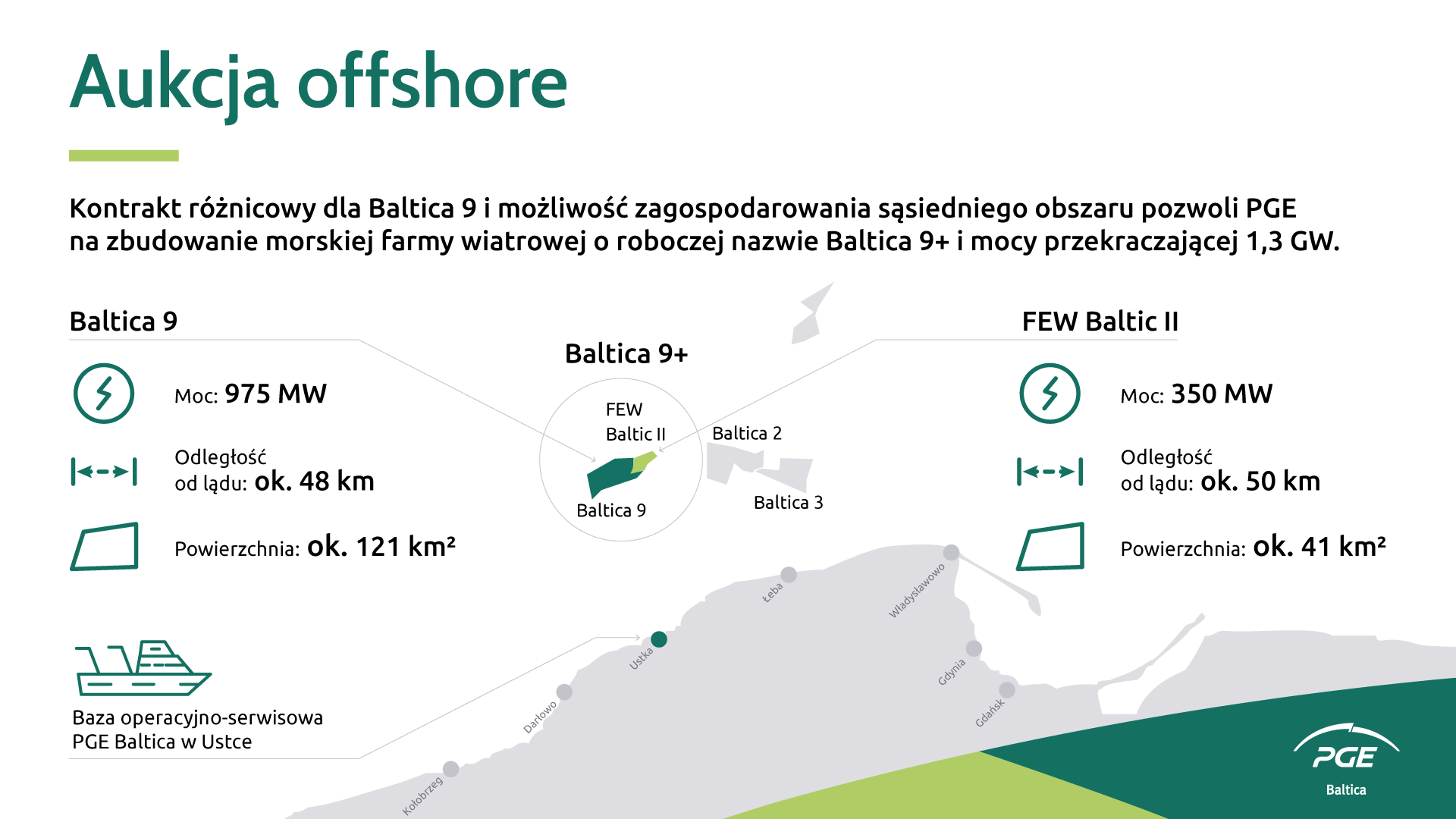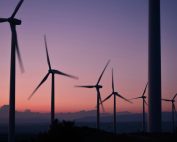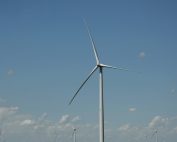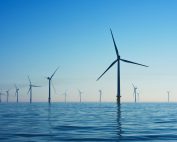The year 2022 was full of events that are permanently changing the conditions for the offshore wind industry. We asked industry leaders and key policy-makers for their assessment of what has been achieved in the past year and what the forecasts are for 2023. In today’s interview of the „Baltic Sea Offshore Wind – 2022 Summary & 2023 Outlook” series, we present the opinion of Kadri Simson, European Commissioner for Energy.
2022 Summary
1) From my perspective the most important developments for the offshore wind in 2022 are…
2022 was overall a very good year for renewables with impressive 15 GW of new wind farms installed across the EU, in addition to 41 GW of solar installed. Although majority consisted of onshore wind farms, Member States last year also made impressive commitments for offshore wind deployment of 76 GW in the North Seas and 20 GW in the Baltic Sea by 2030.
At the same time, the Member States have started regional discussions about how to implement these targets. Good example is the work and cooperation done at the North and Baltic Seas. This regional cooperation strongly contributes to interconnection of the region, which is very much needed as we increase the penetration of renewables in our energy system. This is why the leaders’ summit in Esbjerg in May 2022 and the Marienborg summit for the Baltic Sea in August 2022 were crucial to give the political push for increased regional offshore wind ambition and cooperation.
Since the Russian invasion in Ukraine and building on the ambition of our Member States the Commission has done a lot of work to facilitate the deployment of renewables. The geopolitical complexities affecting the European energy sector have made it clear that going for offshore renewables is not only a meaningful way to implement the Green Deal and move the energy transition forward, but at the same time to increase our security of energy supply, reduce generation costs and, ultimately, support consumers.
It is also worth mentioning, that after long negotiations we also signed a new agreement for cooperation with the UK on offshore wind and grid hybrid projects.
2) Our main achievements in 2022 are…
2022 was a particularly challenging year for the energy sector – the most difficult for decades. The EU already started the year with energy prices much higher than the recent past. And then the Russian invasion of Ukraine in February moved us into a completely new geo-political dimension, with the need to drastically reduce our fossil fuel imports from Russia – our main supplier of gas, in particular – while still ensuring that we have enough supplies to cover our energy needs. The Commission responded in a strong and decisive way, with unprecedented number of legislative proposals in the span of less than one year. We have diversified away from Russian gas, importing more than 120 bcm of LNG, and most importantly, we have shifted to set greater energy efficiency and unprecedented support to deploy renewables. In many ways, Europe has shown its capacity to bounce back when under pressure. The consensus around the Green Deal has strengthened.
In policy terms, the Commission proposal of May 2022, which will significantly ease the permitting process for deployment of renewables including offshore wind, is particularly important. The classification of deployment of renewables being in the overriding public interest will be a real game changer for the industry. The Commission will strongly defend these proposals during the negotiations between the European Parliament and the Council. Importantly, thanks to the adoption of the Council Regulation on permitting, as proposed by the Commission, the legislative framework for easier permitting procedures is already in place until the final version on the renewable energy directive is adopted and enters into force.
For some, the energy crisis was a reason to question the Green Deal. I am particularly happy that we are finding a consensus among the Member States and the industry that the Green Deal and the faster deployment of renewables is the right response to the crisis.
Let me also underline that regardless of the crisis we have faced, whether it was COVID-19 or shortage of energy supplies, the EU electricity system has proven resilient. We have not faced blackouts in Europe. We should not take it for granted.
2023 Outlook
3) An important challenge for offshore wind development in 2023…
The European Union has gone a long way on offshore renewables, but this is no reason to be complacent. On the contrary, we must build on the high political momentum created in 2022 to facilitate the even faster deployment of offshore wind. There is quite a lot of work ahead of us. Although the EU added 15 GW in 2022, based on WindEurope estimates Europe must build 32 GW of capacity annually to meet the EU’s target of a 40 percent share of renewables in the bloc’s energy mix. This shortfall was due to bottlenecks, with 80 GW of wind projects stuck in the permitting phase.
The Commission will therefore put a significant effort to work with Member States to ensure that once the renewable energy directive is adopted it is swiftly implemented in all Member States. The revised permitting rules will to significant extend address a number of permitting bottlenecks we are facing today.
Importantly, on 19 January we expect Member States to agree on non-binding sea-basin goals for offshore renewable development for 2050 with intermediary steps in 2030 and 2040. This is a requirement under the revised TEN-E Regulation. Such offshore goals should also be enshrined in the national energy and climate plans, for which a revised draft is foreseen within this year.
We will also continue to support co-legislators with the aim to reach a swift and ambitious agreement on the Renewable Energy Directive. The finalisation of this proposal should come under the Swedish presidency and from our side, services are working tirelessly to ensure that this happens. Another frontline will be to support as much as possible concrete projects of cross-border nature – this is, hybrid and joint offshore projects.
Lastly, another important focus will be on the offshore supply chain. The Commission is clearly recognising the challenges faced by the industry today and will focus a lot of attention in 2023 to see how this can be addressed. We will be discussing some of these aspects via a dedicated working group with the industry, building upon the work started in 2022.
4) In 2023 we will focus in particular on…
In 2023 we will continue with the efforts to reduce our dependence on Russian fossil fuels and reinforce the security of supply and affordability of energy in Europe. We need home-grown solutions to be more energy independent in addition to diversifying our supplies.
To facilitate the deployment of renewables the Commission will focus on supporting electricity storage technologies. This is absolutely needed to diminish the dependence on gas and enable the greater penetration of renewables.
As already mentioned, the Commission will also focus on easing manufacture bottlenecks in the EU for the wind industry. We cannot allow that all the manufacturing moves outside of the EU.
The Commission is also receptive to the offshore wind industry calls to underline the benefits of non-price criteria for offshore wind auctions. We are reflecting internally how to approach this matter.
Finally, we want even more investment in different up-and-coming technologies, as EU citizens see more clearly that renewables are not only the most sustainable source of energy, but also cheaper and more secure than fossil fuel imports.
